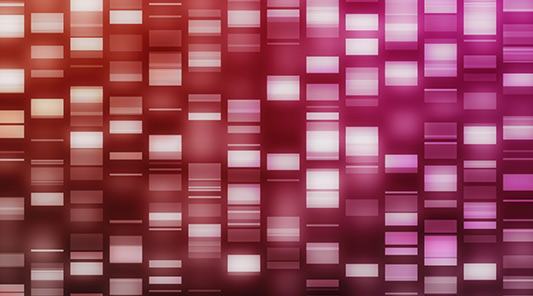Stornext拥有右下DNA
30亿个DNA片段?下一个没问题
除了测序化妆24种不同人类染色体的DNA的30亿化学构件块,还有很少的数据密集。在贝勒医学的人类基因组测序中心(HGSC)部署量子的Stordext中,管理数据是一个令人沮丧的挑战。结果是:经济高效的数据管理,可即时共享访问大量研究内容。
Too Much Data for Legacy System Capacity
作为推动基因对疾病影响研究的三个美国中心之一,HGSC拥有数十名分析DNA测序数据的科学家。随着每天产生的大量数据以及随时需要数百TB的数据进行分析,HGSC零碎的技术基础设施正成为重要研究的障碍。
By 2008 when Geraint Morgan was named Director of Information Systems, the volume of data was already straining HGSC’s storage capabilities and was expected to grow by 20 petabytes over the next two years. In addition, there was the challenge of centrally managing a complex heterogeneous environment of servers, networks, and storage technology.
Stornext一个熟悉的赢家大数据
Morgan quickly found that one name kept coming up when he looked at what other companies with big-data challenges were doing: Quantum’s StorNext.
“StorNext提供了我们所需要的可扩展性,支持现有的存储硬件,没有额外的硬件所需的大量投资,以及易于管理的系统,”摩根说。
HGSC购买了StorNext文件系统和Storage Manager,以实现跨多个操作环境的文件共享和跨存储层的自动数据移动。
Today, following the ingest of data on the local genome scanner devices, the data is copied to a centralized StorNext File System. Multiple genome analysis applications run on top of the StorNext Distributed LAN Client, which connects to the centralized storage to process the data in parallel. StorNext Storage Manager automatically moves data between different disk systems and a Quantum Scalar tape library, thereby protecting content at lower costs.
自从部署StorNext以来,摩根一直对其带来的好处感到非常满意。
摩根说:“由于基因组学研究的性质,今天产生的数据可能没有明显的价值,但可能会导致未来的重要发现,因此我们保存了HGSC产生的所有数据。”。“这将创建一个不断增长的归档,StorNext将在帮助我们管理这一增长方面发挥关键作用。数据的指数级增长也是我们计划利用StorNext提供的重复数据消除功能的原因之一,它将使我们能够优化存档所需的存储容量。”


 通过在单个解决方案中结合高速数据共享和经济高效的内容保留,StorNext使我们的研究人员能够快速轻松地访问他们需要的数据,并消除了我们遗留系统产生的重要管理开销。
通过在单个解决方案中结合高速数据共享和经济高效的内容保留,StorNext使我们的研究人员能够快速轻松地访问他们需要的数据,并消除了我们遗留系统产生的重要管理开销。
